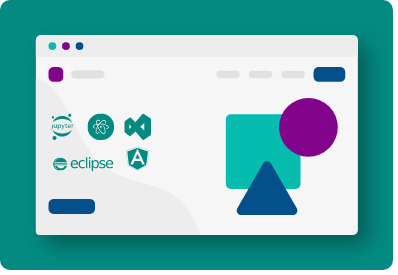
As we continue our deep dive into essential software development technologies, it's time to explore the frameworks that guide the process of development itself. These are known as development methodologies, and they provide the structure we use to plan, manage, and control the way we develop software.
Here are 12 development methodologies widely used in the software development landscape.
- Agile
This popular methodology emphasizes flexibility, continuous improvement, and customer satisfaction. Agile encourages the regular inspection and adaptation of the development process to ensure the end product meets the changing needs and requirements of the client.
- Scrum
A subset of Agile, Scrum is designed to facilitate teamwork on complex projects. It organizes work into 'sprints' — short periods dedicated to completing specific tasks, followed by reviews and adaptations for the next sprint.
- Lean
Born from Toyota's manufacturing model, Lean focuses on minimizing waste in the development process and maximizing productivity, leading to more efficient output and higher-quality products.
- Kanban
A visual system for managing work as it progresses through a process. Kanban boards help visualize both the process and the actual work passing through that process, making it easy to identify bottlenecks and inefficiencies.
- Extreme Programming (XP)
XP is focused on enhancing software quality and responsiveness to changing customer requirements. It uses techniques like pair programming, extensive code review, and continuous integration to encourage higher standards of code quality and organization.
- Feature-Driven Development (FDD)
FDD is a model-driven short-iteration process that is aimed at delivering frequent, working results to build client confidence and meet goals effectively.
- Crystal
A collection of Agile software development methods that prioritize individuals and their skills, interactions, community, and communication over processes and tools.
- Rapid Application Development (RAD)
Emphasizing rapid prototyping over extensive upfront planning, RAD is designed to produce usable systems in as short a time as possible.
- Dynamic System Development Method (DSDM)
An Agile methodology that offers flexibility in developing software within strict time and budget constraints.
- Spiral
This methodology focuses on early identification and reduction of project risks, making it suitable for large and complex projects where requirements may be unclear or change frequently.
- DevOps
A culture, movement, or practice that emphasizes the collaboration and communication of both software developers (Dev) and other IT professionals (Ops), while automating the process of software delivery and infrastructure changes.
- Waterfall
One of the earliest development methods, the Waterfall model describes a linear, sequential approach to software development, with one phase flowing logically into the next.
Each of these methodologies has its strengths and weaknesses, and different types of projects may require different approaches. In the next part of our series, we will be discussing other key aspects of software development. Stay tuned for more!






















